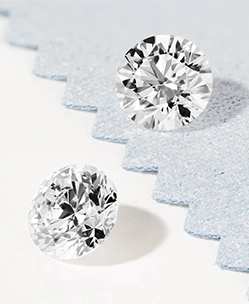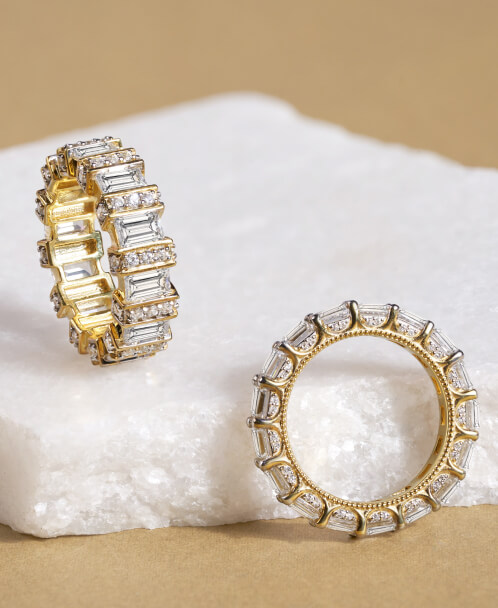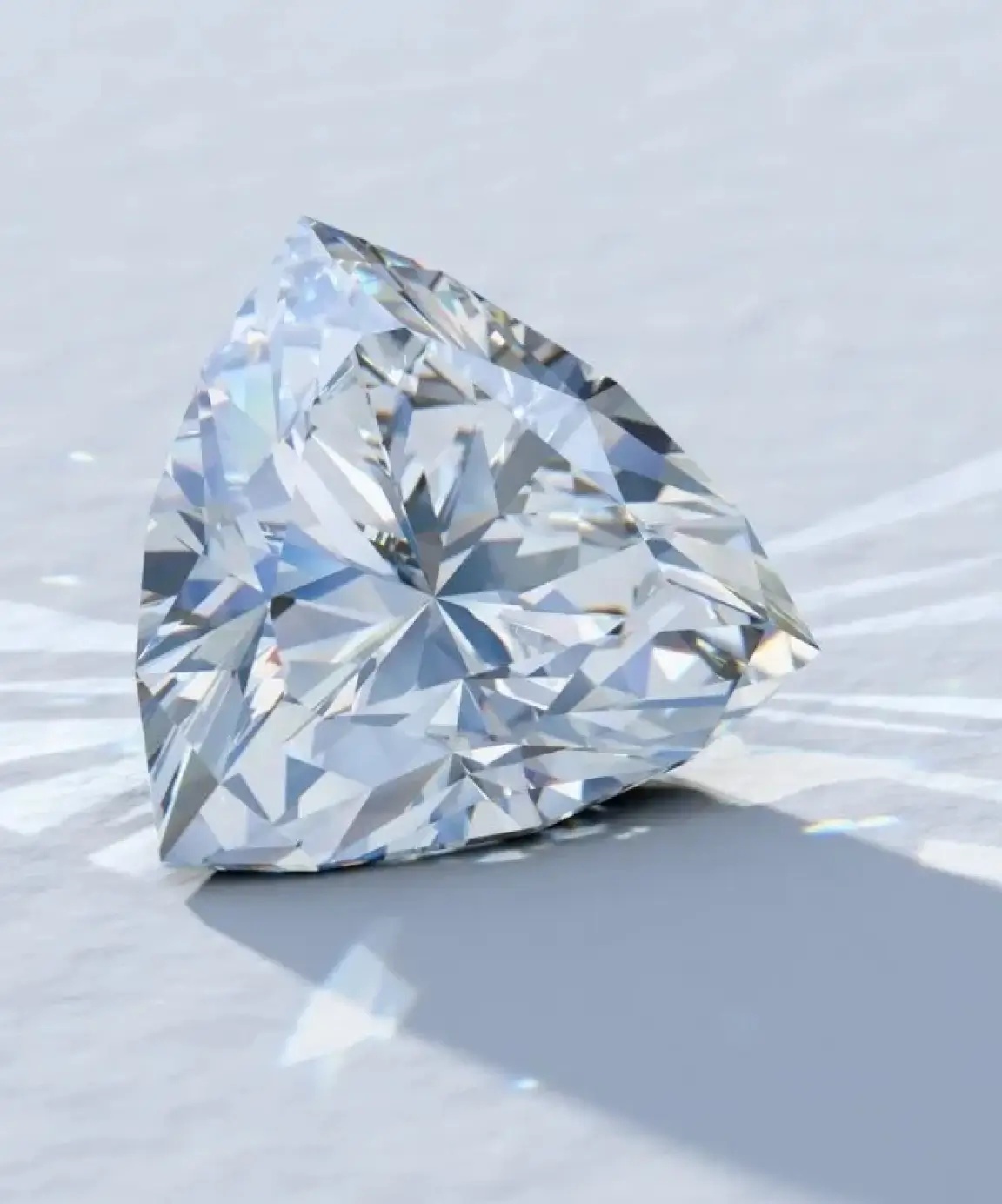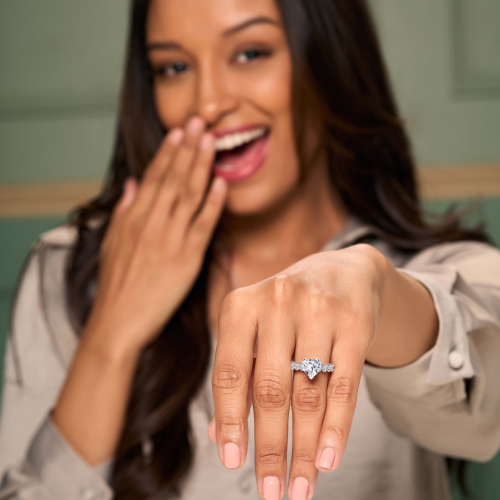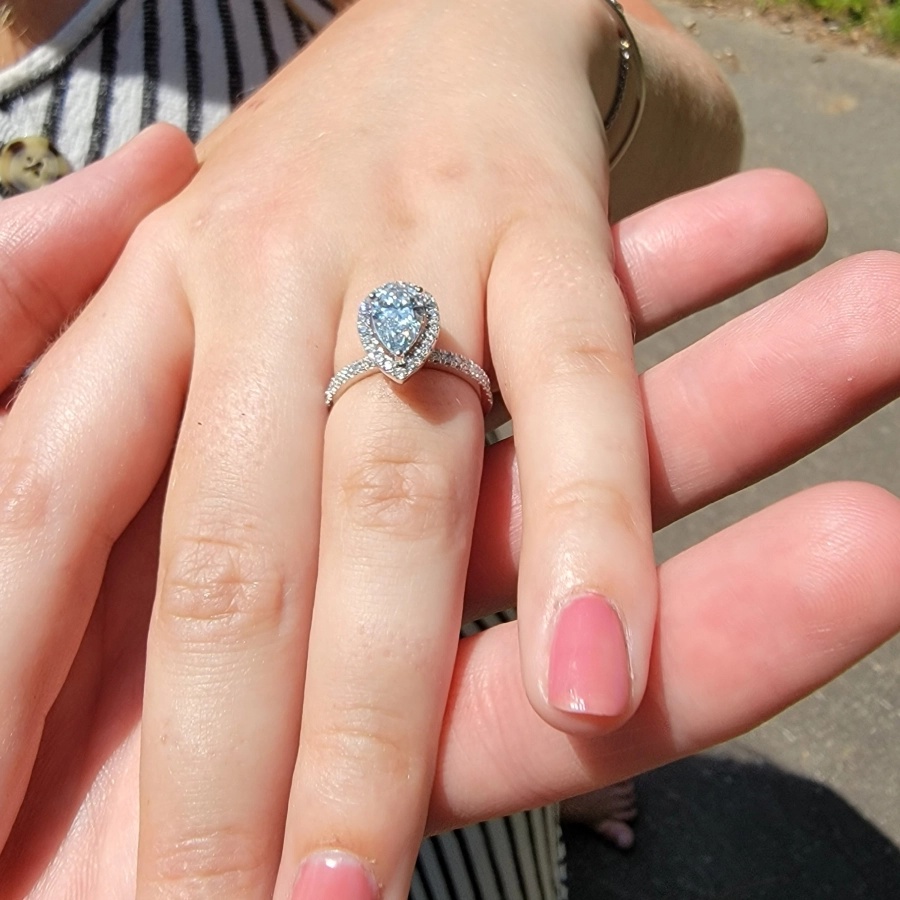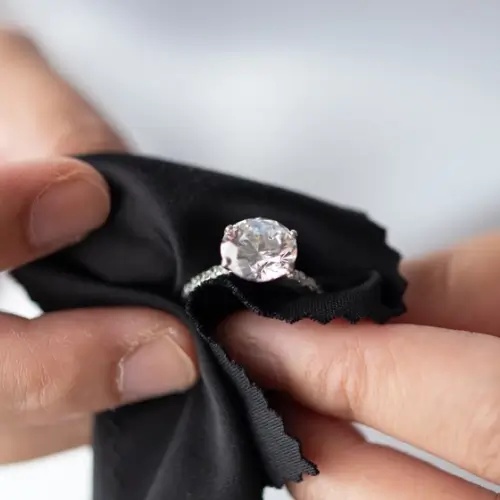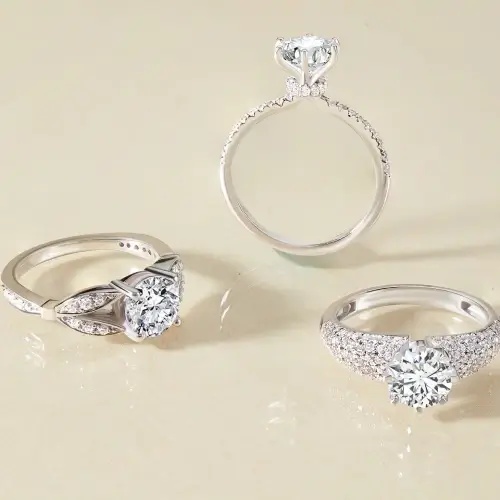A Trillion cut diamond ring can be the one for you if you're seeking a unique alternative to a ring with a typical diamond shape. If you want exquisite accent stones for your jewelry design with more flair and fire, then a Trillion cut diamond is an excellent pick for you. The distinctive symmetry and dimensions of the Trillion cut diamond stone makes them ideal for accent stones; this cut is also referred to as the trilliant cut. They are a fantastic option if you want a design that sticks out from the crowd because of their rare use as solitaires and center stones. This blog is meant to help you understand the Trillion cut diamonds better, listed below is an outline of the article to help you navigate better with your reading!
TABLE OF CONTENT
What Is a Trillion Cut Diamond?
The Trillion cut is a triangular diamond shape featuring a flat table on the top and three sides that are all the same length. This diamond shape includes 31 to 50 facets. Besides that, if the stone is cut to the right depth, the trillion diamond’s distinctive style is sure to have a lot of fire and shine with a piercing brilliance. Moreover, in comparison to the more popular and historic diamond forms of Princess, Cushion cut, Heart, Pear, Marquise, Radiant, Asscher, Emerald, and Oval, the Trillion cut diamond shape dates back to the 1960s. It's often considered a bold and provocative form with an eye-catching, modern look that stands out from the crowd. The Trillion cut is more frequently used as side stones than as primary stones, in contrast to other diamond shapes. However, engagement rings with Trillion cut diamonds as the main stone are also available. To truly appreciate the depth of a Trillion cut diamond, one must first research the shape's history and the location from where it originated. It is also critical to understand how to buy a Trillion cut diamond ring.

How Unique & Rare Are Trillion Cut Diamonds?
Trilliant, Trielle, and Trillian Cut diamonds are other names for Trillion cut diamonds.
This is a brand-new diamond cut created in the 1960s. As the title indicates, this cut produces a triangular-shaped diamond with three equal sides, a level table on the surface, and flat or sharp edges. Trillion cut diamond rings are exceptionally rare. Trillion cut diamonds, compared to other diamond shapes, are more fitted to being used as accent stones within a jewelry creation than as a center gemstone. However, with the proper cut, carat weight, and color grades, they may be used as a solitaire too. The Trillion cut diamond complements current jewelry designs well, and this diamond cut is a fantastic choice for those looking for an on-trend streamlined style that stands out from the crowd.
A Brief History of Trillion Cut Diamonds
In contrast to other cuts, Trillion cut diamonds have a relatively new history. The Asscher siblings from Amsterdam invented the first triangular cut in the 18th century. Their aesthetic impacted the briolette and Old Mine triangular diamond cuts, which in turn influenced Leon Finker, who invented the Trillion cut in the mid-1960s.

In the late 1970s, Finker sought to establish the term "Trillion" as a trademark, but by then, any diamond with a triangle cut had already been given that term. After patenting the cut in 1978, he trademarked the term "trielle" in 1991. All diamonds with a triangular cut are now known as Trillion cuts. The terms "triangular brilliant" and "triangular modified brilliant" are used to describe non-branded triangular cuts.
Benefits and Drawbacks of Trillion Cut Diamonds
There are benefits and drawbacks to Trillion cut diamonds because of their odd form. It's crucial to take into account each of these factors while determining whether this cut is the best pick for you. They seem larger than round or princess cut diamonds of the same carat size. Because of their incredible brilliance and fire, they can mask imperfections and color. When unmounted or improperly perched in its place, Trillion cut diamonds' pointed edges are vulnerable to chipping.
Secure prongs are necessary as they safeguard the diamonds' edges, and the V-prong works best for doing so. You'll need to clean your diamond more regularly than you would the other shapes, as Trillion cut diamonds have a shallow cut that makes them readily dulled by trace quantities of dirt or dust. There may be subtle variations among Trillion cut diamonds, but they always have a triangular form with three sides that are typically of the same length. The sides might be straight for a very graphic appearance or slightly rounded for a softer and bigger appearance.
A center Trillion-cut diamond in an engagement ring is rare, although many designers use them as accent stones. The lovely shine added by the Trillion cut diamond rings and the tapered edges go well with most appearances. Trillion shaped diamonds when used as accents contrast well with square or rectangular shape center diamonds . Furthermore, when set in yellow gold, the triangular diamond shapes appear even more beautiful.
When compared to a diamond with a deeper cut, a Trillion cut diamond appears larger from above because it often has a moderate to shallow cut. Since the lengthy sides may give it the appearance of being larger than it actually is, a Trillion cut diamond ring is perfect for people who desire a big look on a tight budget. Since it's hard to find and to get your hands on a Trillion cut diamond ring, you are sure to stand out from the crowd. The geometric pattern works well with a variety of settings, including bezels, halos, and solitaires. At Friendly Diamonds, you are sure to make a great choice for your Trillion cut diamond needs. We have an amazing assortment of brilliant lab diamonds, available in all shapes and sizes that are certain to increase the brilliance of your ring.
